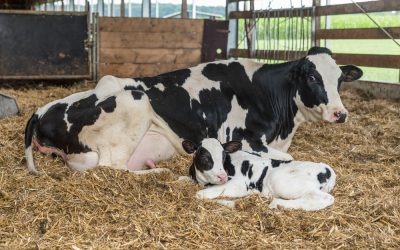Technical document produced in the project “New housing systems for farrowing sows in commercial farms in the project”
Project funded through operation 01.02.01 Technology Transfer of the Rural Development Programme of Catalonia 2014-2020.
onventional farrowing crates pose welfare problems for sows and their piglets. Several countries in Europe, such as Switzerland, Sweden and Norway, currently prohibit their use. Denmark plans to have at least 10% of lactating sows in free-range systems by 2021. In the UK, 40% of lactating sows are housed in systems with outdoor access and the industry declared a willingness to increase alternative indoor farrowing systems. The confinement of animals in crates is receiving significant public criticism and the industry is moving towards innovative housing of sows in maternity.
Most sows are housed in crates approximately five days before farrowing and until weaning of the piglets at around 28 days of age. The farrowing pen was first introduced in the 1960s and its main purpose was to reduce the risk of the sow crushing her piglets. Conventional farrowing crates are considered to be economical, efficient and safe, with maximisation of piglet survival as the main objective. However, they pose welfare problems for the sows, but also for the piglets.
The sow initiates nest building behaviour approximately 16-24 h before farrowing. The sow is more active and builds a comfortable area where she puts manipulable material. To perform this nesting behaviour, the sow needs space and manipulable material, e.g. straw. When the sow performs nest building, she feels calmer and more relaxed during farrowing. The release of oxytocin is higher when sows are relaxed. This hormone stimulates uterine contractions, promotes the expression of maternal behaviour and maximises milk ejection during the lactation period. This can have a positive effect on productive parameters such as piglet growth and reduced neonatal mortality.
Alternative” farrowing crates should improve the welfare of the sows by giving more movement and promoting nest building as well as maternal behaviour; however, they must be designed to protect the piglets.
In farrowing pens where the sow can move more freely, the piglets must be well protected.
Neonatal piglets are very vulnerable. They have to get to the udder and drink colostrum quickly. The sow is exhausted during farrowing and is still in pain several hours after farrowing. If the sow does not control her posture changes she risks crushing her piglets.
In non-confinement farrowing systems, the temperament and behaviour of the sows are particularly important.
Maternal behaviour must be promoted by good management during peripartum and this mainly includes:
- Reduce pain around delivery.
- Provide manipulable material.
- Develop a good caretaker-animal relationship.
- Provide housing that protects the piglets. A well-designed and comfortable nest is of utmost importance.
Main types of non-confined indoor birthing systems depending on the project Free Farrowing (www.freefarrowing.org), are the following:
1) Temporary Confinement
The sow can turn around, but may be temporarily restricted from moving during the hours around farrowing.
2) Individual “zero containment” cages.
The sow is housed individually and is not caged at any time. Simple farrowing pens resemble conventional farrowing crates, but without the cage and with some features of the facilities to protect the piglets. The designed pens are more elaborate, larger, and allow the sow to separate the defecation area from the lying area. In addition, they provide a design that facilitates the changing of the sow’s posture.
3) Group delivery systems.
These systems allow sows and litters to mix before weaning. Most of them are based on multisuckling housing. Both sows and piglets have more space and are often housed on straw. Sows are initially housed in individual pens and are grouped together with their litters on days 10 – 21 after farrowing. Alternatively, sows can be grouped together prior to farrowing giving access to individual farrowing areas which can be removed at a later date.
Scientific articles on free-range calving systems are published more and more frequently. However, the practical implementation of these systems can raise questions and concerns, especially relevant in hot climate areas where heat stress can be a problem.
Some common concerns about non-confined farrowing:
- Risk of crushing
- Management of aggressive sows, sows that are not very maternal or very active sows
- Management of heat stress
- Floor type
- Pen and sow hygiene
- Type of manipulable material
- Feeding system management
- Management difficulties around farrowing and extra time required
- Personnel safety
Change involves risk. It is essential to be able to facilitate the implementation of new animal housing systems by providing practical solutions and accompanying the producer. At AWEC we have been involved in the creation of a multi-stakeholder network in the pig sector to test free farrowing systems under commercial conditions in Catalonia.
Conventional farrowing crates have been replaced by free farrowing pens with temporary confinement and on slatted floors. In a project coordinated by FAWEC we have tested two temporary confinement systems: JLF15 and SWAP (Sow Welfare and Piglet Protection). In both systems, the sow can turn around, but at the same time, these systems allow the sow’s movement to be restricted in the hours around farrowing. Both systems provide a comfortable and warm nest for the piglets. The nest is a key aspect to promote the safety of the piglets and makes management tasks much easier. Finally, enrichment material is provided through a material dispenser. The JLF15 system measures 2.4 x 2.4 metres. The SWAP system is larger (3 x 2 metres) and allows the sow to separate the defecation area, the resting area and the feeding area.
Project funded through operation 01.02.01 Technology Transfer of the Rural Development Programme of Catalonia 2014-2020.



